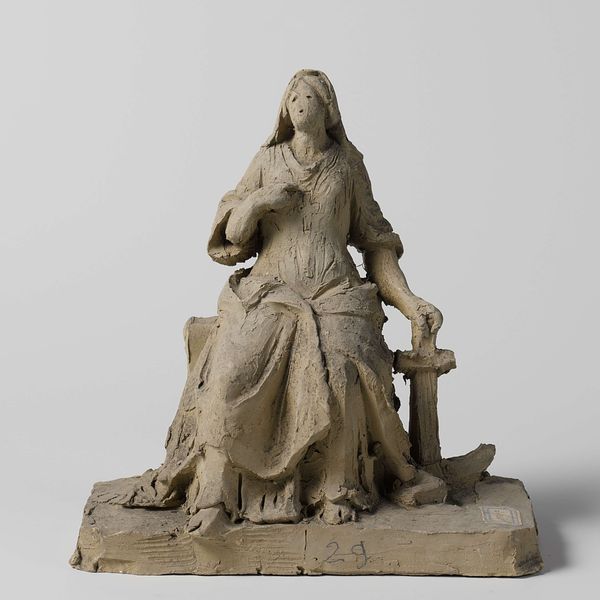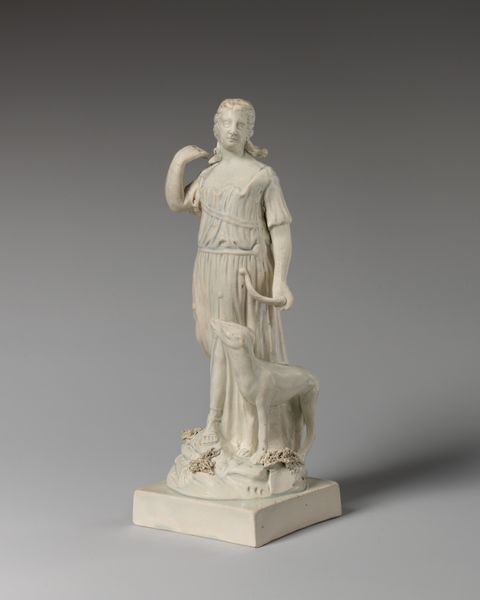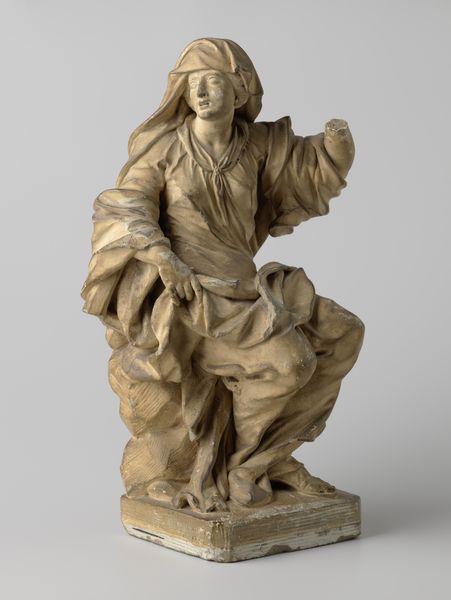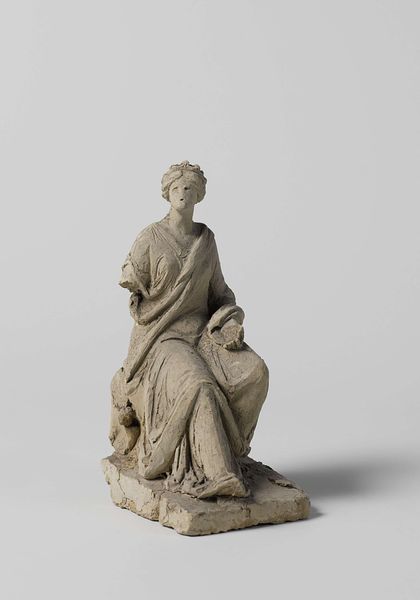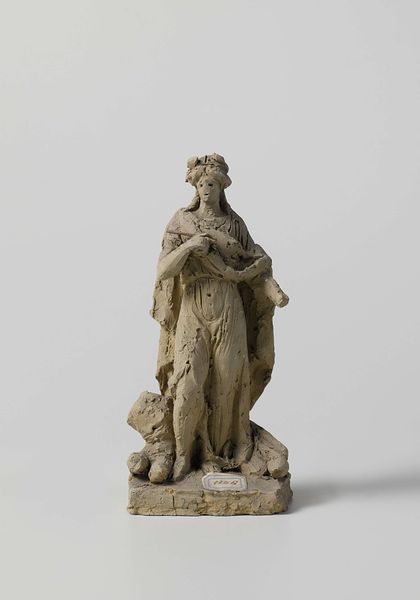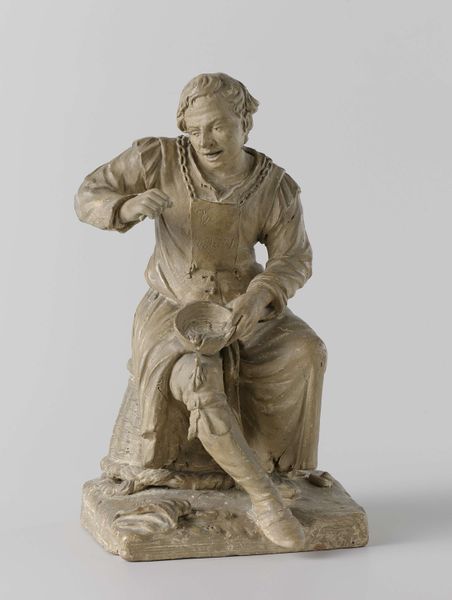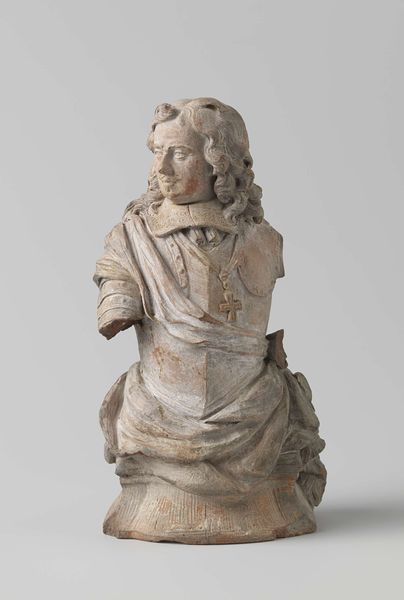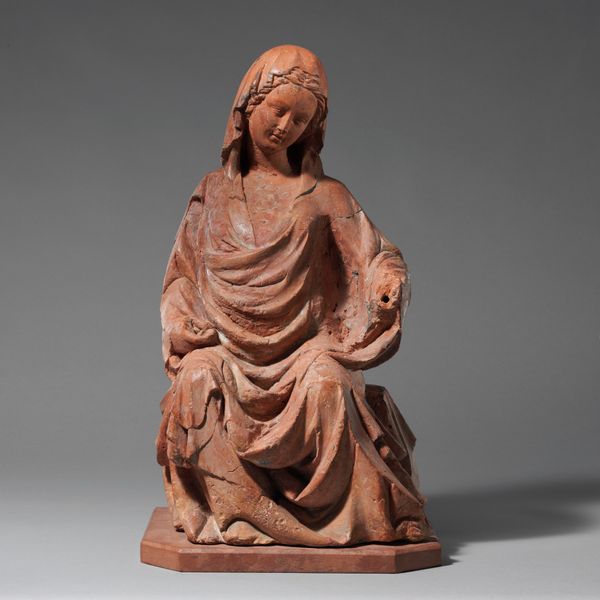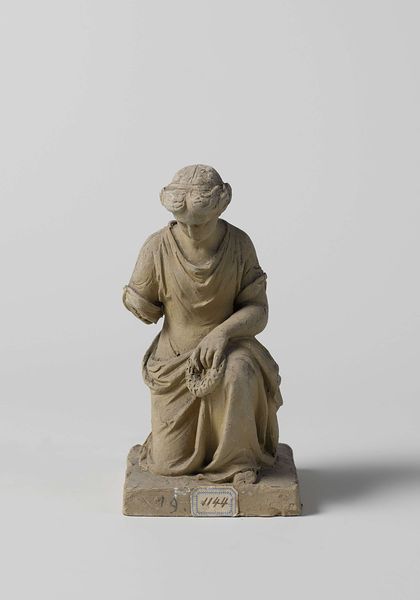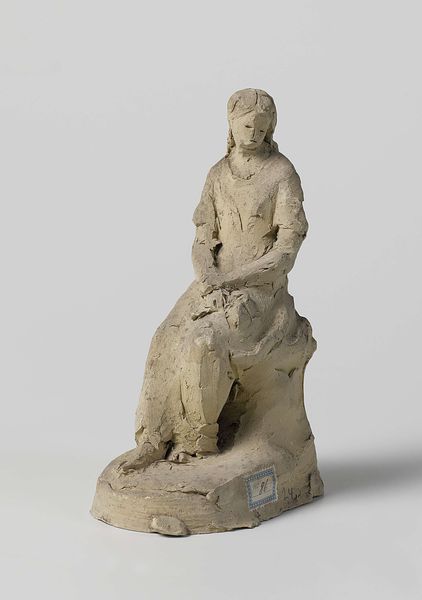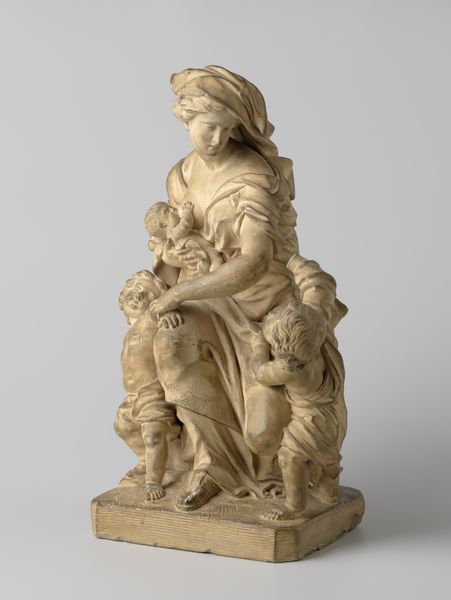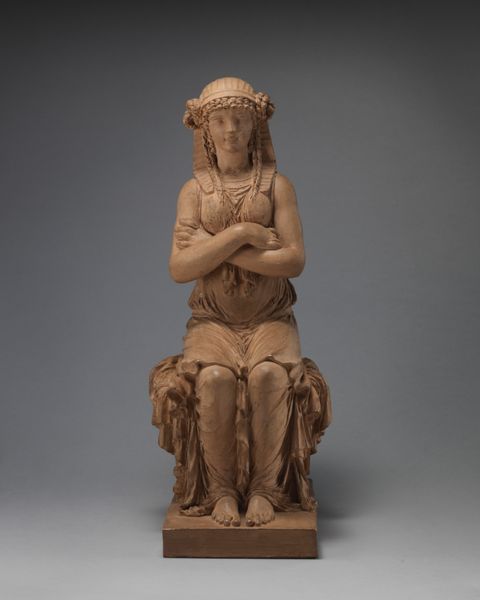
Dimensions: height 25.5 cm, width 23.9 cm, depth 17.2 cm
Copyright: Rijks Museum: Open Domain
Curator: This is Eugène Lacomblé's wooden sculpture, "Ontwerp voor een standbeeld van Moliere," created sometime between 1800 and 1900. Editor: It has an unassuming air, a study in repose—yet there's a certain weariness etched in his downturned gaze. The weight of expectation, perhaps? Curator: Certainly, his downcast posture suggests contemplation rather than celebration. It deviates from typical heroic depictions, prompting us to consider the artist's intent in portraying Molière with such understated grace. The folds of his garments are deeply etched, characteristic of Baroque era figuration, hinting at interiority as much as physical presence. Editor: I’m drawn to think about what representation meant for someone like Moliere, in the theatrical context. While, here, he appears as a passive observer, we know that Moliere made incisive attacks on the establishment through comedy, so this more muted representation of the playwright feels like a conscious statement, particularly when viewed from a historical vantage. Curator: The absence of vibrant colors heightens that introspective feel, focusing instead on texture and form, as the material carries meaning too. The use of wood introduces a natural, human element, quite different from the cold monumentality one might expect in, say, marble. This adds layers to our understanding of how artists negotiate fame and remembrance. Editor: Precisely. There's an interesting tension here. By softening the public persona, it opens up possibilities for connection. Is it designed to reveal, or to perhaps conceal something of Moliere the performer, the artist? It also prompts considering broader social dynamics around censorship. Moliere challenged existing power structures through theater, in some ways becoming like a revolutionary symbol of defiance for the ordinary citizen. Curator: I appreciate how this sculpture prompts introspection. Molière remains an influential figure; it serves as a timeless echo connecting us across centuries, urging us to examine ourselves. Editor: And for me, it encourages dialogue between art history and contemporary theory—thinking more deeply about social constructs, like identity. How are these intertwined with an artwork’s impact? It also makes one wonder how Moliere himself would have received this less conventional portrayal of his image.
Comments
No comments
Be the first to comment and join the conversation on the ultimate creative platform.
